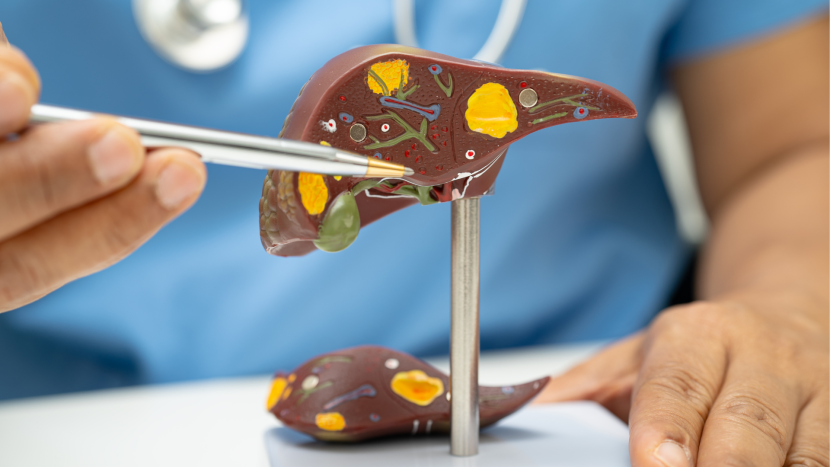Your liver works tirelessly—day in and day out—to filter toxins, aid digestion, and support overall health. However, constant exposure to alcohol, infections, fatty buildup, or chronic diseases can cause scarring. This condition, called liver cirrhosis, involves the gradual replacement of healthy liver tissue with scar tissue, which may eventually lead to liver failure without early intervention.
The danger lies in cirrhosis’s silent progression. By the time symptoms become noticeable, significant damage may have already occurred. That’s why recognizing early signs of liver cirrhosis is critical. Watch for these six subtle but serious symptoms—they could signal a struggling liver.
What is the Liver Cirrhosis?
Cirrhosis of the liver is a late-stage disease where scar tissue gradually replaces healthy liver tissue. This damage stems from long-term, chronic hepatitis—persistent liver inflammation with various causes. When inflammation continues unchecked, the liver tries to heal itself by forming scar tissue. However, excessive scarring disrupts liver function, eventually leading to chronic liver failure.
Are There Stages of Cirrhosis?
Cirrhosis is a progressive disease that worsens as scar tissue replaces healthy liver tissue. In the early stage, called compensated cirrhosis, your body adapts to the reduced liver function, and you may not notice significant symptoms. However, as the damage advances and liver function declines further, symptoms become more apparent. This later stage is known as decompensated cirrhosis.
How Does Cirrhosis Affect Your Liver and Body?
Scarring in the liver disrupts blood and oxygen flow, impairing its ability to:
- Filter toxins from the blood
- Metabolize nutrients
- Produce bile and essential blood proteins
The buildup of scar tissue can also compress blood vessels, particularly the portal vein system, leading to portal hypertension—a dangerous complication that can cause further health issues.
How Common Is Cirrhosis?
Cirrhosis is a growing public health concern in India, particularly affecting middle-aged men. Unlike some conditions that develop rapidly, cirrhosis usually progresses slowly over years of liver damage, often going unnoticed until it’s advanced. According to data from the Global Burden of Disease (GBD) Study, India accounts for nearly 18% of all global deaths caused by cirrhosis and chronic liver diseases, making it the country with the highest contribution to cirrhosis-related mortality worldwide. In 2019 alone, approximately 270,000 people in India died due to cirrhosis, and this number continues to rise.
The age-standardized death rate for cirrhosis in India stands at around 23 to 24 per 100,000 population, which is significantly higher than the global average. Cirrhosis has now become the eighth leading cause of death in the country, moving up the ranks in recent years. Notably, men are about 3.5 times more likely to die from cirrhosis than women, reflecting gender-based differences in alcohol consumption and lifestyle risk factors.

6 Early Warning Signs of Liver Cirrhosis You Should Never Ignore
1. Fatigue and Weakness
One of the earliest signs of liver cirrhosis is persistent fatigue and weakness. As the liver becomes damaged, it struggles to store and release energy effectively. As a result, you may feel constantly tired and sluggish and notice a decrease in stamina—even after adequate rest.
2. Jaundice
Another key indicator of liver dysfunction is jaundice, which is characterized by the yellowing of the skin and eyes, along with dark-colored urine. This occurs when the liver can no longer properly process bilirubin, a waste product from the breakdown of red blood cells. Jaundice is a critical warning sign that liver function is severely impaired.
3. Abdominal Swelling and Ascites
As liver cirrhosis progresses, fluid may begin to accumulate in the abdomen, leading to noticeable swelling and discomfort. This condition, known as ascites, often indicates worsening liver damage. If left untreated, ascites can lead to serious complications and therefore requires prompt medical attention.
4. Spider Angiomas and Palmar Erythema
In addition to internal symptoms, liver cirrhosis often presents visible changes in the skin. For instance, you may notice spider angiomas—small, spider-like blood vessels appearing on the upper chest, neck, or face. Similarly, palmar erythema, or reddening of the palms, may develop. Together, these signs can serve as early clues pointing to underlying liver dysfunction.
5. Easy Bruising and Bleeding
Moreover, as cirrhosis affects the liver’s ability to produce clotting factors, even minor bumps or cuts may result in easy bruising or excessive bleeding. If you find yourself bruising more frequently or bleeding longer than usual, it could be a sign that your liver is no longer producing these essential proteins efficiently.
6. Mental Confusion and Personality Changes
Lastly, hepatic encephalopathy is a serious complication of cirrhosis that impacts brain function. As toxins build up in the bloodstream and reach the brain, they can cause symptoms such as mental confusion, memory loss, mood swings, and in advanced cases, coma. These changes should never be overlooked and demand immediate medical evaluation.
Why Early Detection Matters
Liver cirrhosis is irreversible, but early detection can slow its progression, prevent complications, and even improve your quality of life. Treatment depends on the underlying cause—whether it’s alcohol-related liver disease, hepatitis, non-alcoholic fatty liver disease (NAFLD), or something else. Lifestyle changes like quitting alcohol, eating a liver-friendly diet, and regular checkups can make a big difference.
Final Thoughts
Your liver doesn’t complain loudly—but when it does, you should listen. If you or someone you know is experiencing any of these early signs, it’s essential to consult a healthcare professional. Detecting cirrhosis early could be the key to protecting one of your body’s most vital organs.
FAQs
1. Is liver cirrhosis reversible in its early stages?
Ans: While the scarring itself is usually permanent, early detection and treatment can slow or even halt further damage and improve liver function.
2. Who is at higher risk of developing liver cirrhosis?
Ans: People with a history of heavy alcohol use, chronic viral hepatitis, obesity, or diabetes are at greater risk.




